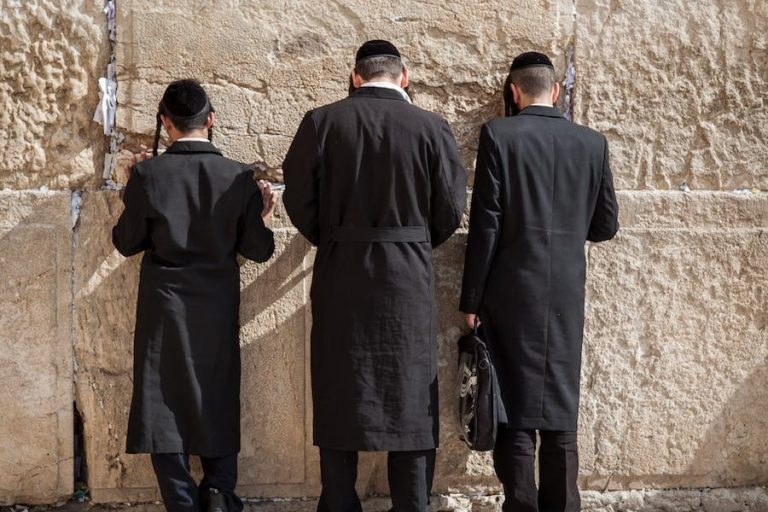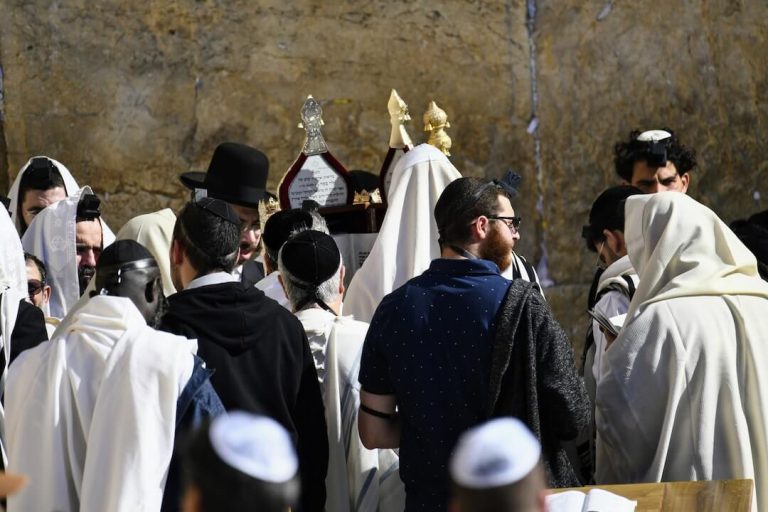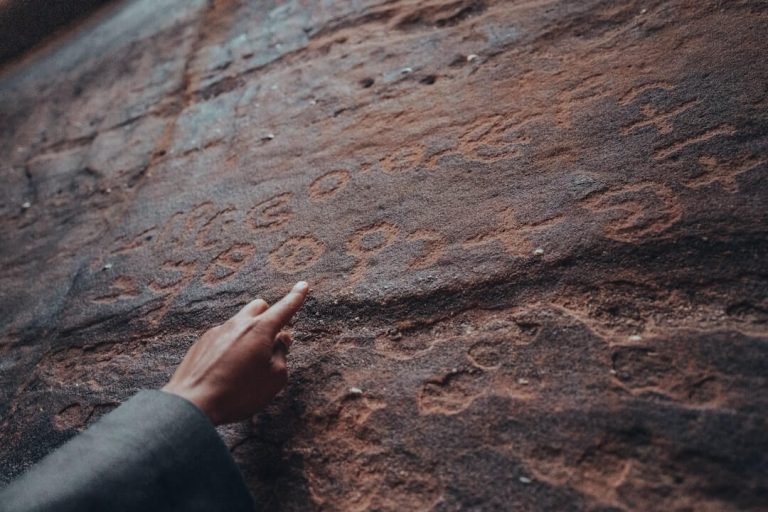The Significance of Rabbi Nachman’s Prayer for Peace in Judaism
Introduction
Welcome to Xavier University, where prayer is not just a religious practice, but a way of life that promotes peace and spirituality. As a Catholic Jesuit institution, Xavier University is known for its inclusive and diverse community, where students and faculty from all backgrounds come together to explore and celebrate different faiths.
The Role of Prayer in Judaism
Prayer holds great significance in the Jewish religion and plays a central role in the daily lives of Jewish individuals. It serves as a means of connecting with God, seeking comfort, and expressing gratitude. Jewish prayers are diverse, encompassing a range of traditional and contemporary forms.
Traditional prayers, such as the Shema and Amidah, have been recited for centuries and are deeply rooted in Jewish tradition. These prayers express devotion, praise, and supplication to God. Contemporary prayers, on the other hand, reflect the evolving nature of Jewish worship and may address modern concerns or incorporate new expressions of spirituality.
One notable prayer in Judaism is Rabbi Nachman’s prayer for peace. This prayer, attributed to Rabbi Nachman of Breslov, emphasizes the importance of peace and unity among all people. It serves as a powerful reminder of the Jewish commitment to promoting harmony and understanding in the world.
Prayer also plays a significant role in fostering interfaith dialogue and understanding. Through prayer, Jews can connect with individuals from different religious backgrounds, promoting mutual respect and cooperation.
Rabbi Nachman’s Prayer for Peace
Rabbi Nachman of Breslov (1772-1810) was a prominent figure in the Hasidic movement, known for his teachings on faith, joy, and personal growth. His legacy continues to inspire thousands of followers around the world, with many active in kiruv (outreach) efforts. One of his most well-known teachings is his prayer for peace, which has become a staple in Jewish prayer services and interfaith gatherings.
The historical context of Rabbi Nachman’s prayer for peace is rooted in the turbulent times of the early 19th century, when wars and conflicts were rampant in Europe and the Middle East. In response to this violence, Rabbi Nachman emphasized the importance of compassion and unity among all people.
His prayer reflects this message, calling for an end to war and bloodshed and the establishment of a great and glorious peace. The words of Rabbi Nachman’s prayer hold deep significance in promoting peace and unity within the Jewish community and beyond. By recognizing that we are all created in the image of God and that our purpose on earth is not for strife and division, but to encounter the Divine, the prayer encourages individuals to see past their differences and come together in compassion and understanding.
The impact of Rabbi Nachman’s prayer for peace can be seen in its widespread use in Jewish prayer services and its incorporation into interfaith gatherings. Its message of peace and unity continues to resonate with people of all faiths and backgrounds, making it a powerful tool for promoting harmony and understanding in a world plagued by violence and conflict.
The Impact of Rabbi Nachman’s Prayer
The power of prayer is deeply ingrained in Jewish tradition and plays a significant role in times of communal tragedy and conflict. In Judaism, prayer is seen as a means of connecting with God and seeking guidance, comfort, and strength. One prayer in particular, known as the “Prayer for Peace” by Rabbi Nachman of Beslov, has had a profound impact on the Jewish community.
Rabbi Nachman’s prayer, “Let there be a truly great peace between every person and their fellow,” has been recited by Jews around the world during times of war and violence. Its message of peace and unity has brought comfort and healing to individuals and communities facing turmoil and strife.
In the face of violence and conflict, Rabbi Nachman’s prayer promotes a sense of strength and courage. It reminds individuals to turn to God for guidance and to strive for peace and understanding in the face of adversity.
The historical context of Rabbi Nachman’s prayer also adds to its significance. The prayer was written during a time of tension and conflict in Israel, and its message of peace continues to resonate with Jews facing similar challenges today.
Through its powerful message and historical significance, Rabbi Nachman’s prayer continues to be a source of comfort and strength for the Jewish community in times of communal tragedy and conflict.
Incorporating Prayer into Daily Life
Jewish prayer is an integral part of daily life for many students and faculty at Xavier University. The three daily prayer services, Shacharit, Mincha, and Ma’ariv, are often incorporated into their routines. These prayers, which were instituted by Abraham, Isaac, and Jacob, respectively, serve as a way to connect with God and make Him a part of every aspect of their lives. Aside from the prescribed prayers, many individuals also engage in personal prayers throughout the day, expressing gratitude and asking for guidance and support. This practice of constant communication with God is believed to bring personal wellbeing and spiritual fulfillment to those who engage in it.
In addition to its personal benefits, prayer also plays a crucial role in promoting social justice and equality within the Jewish community. The Amidah, a series of nineteen blessings recited during prayer, includes a plea for peace and justice for all people. This emphasis on social responsibility and compassion is a central aspect of Jewish prayer and serves as a reminder to individuals to work towards a better world for all. One significant prayer in the Jewish tradition is Rabbi Nachman’s prayer for peace.
This prayer, also known as “The Tikkun HaKlali” or “The General Remedy,” was composed by Rabbi Nachman of Breslov in the 18th century. It is believed to have healing powers and is recited by many individuals seeking physical, emotional, or spiritual healing. Its popularity has spread beyond the Jewish community, with people of all faiths reciting it for peace and harmony in the world. The historical context of Rabbi Nachman’s prayer adds to its significance. During the time it was composed, the Jewish community was facing persecution and oppression.
This prayer served as a source of hope and comfort for those struggling, and its message of unity and peace continues to resonate with people today. Incorporating prayer into daily life is a fundamental aspect of the Jewish faith. It serves as a way to connect with God, promote social justice, and find inner peace and fulfillment. As Rabbi Nachman’s prayer for peace reminds us, prayer has the power to bring healing and harmony to our world.
Rabbi Nachman’s Prayer in Reform Judaism
Rabbi Nachman’s prayer for peace holds a significant place in Reform Judaism, as it reflects the core values of the movement. This prayer, also known as “Tefilat HaShalom” or “Prayer for Peace,” is a powerful plea for an end to war and violence in the world. It is often included in Reform prayer books and services, serving as a reminder of the importance of peace and unity in the Jewish faith. In the modern world, where conflicts and tensions continue to arise, Rabbi Nachman’s prayer remains relevant and resonates with many Reform Jews. It serves as a call to action, urging individuals to work towards creating a world free from strife and division.
This prayer also highlights the Jewish belief in the pursuit of justice and righteousness, as stated in the Torah and Prophetic texts. Rabbi Nachman’s prayer originated in the late 18th century, during a time of political and social turmoil in Europe. It was written by Rabbi Nachman of Breslov, a Hasidic leader known for his teachings on spiritual growth and connection with God. The prayer has since become a source of inspiration for Jews of all denominations, including the Reform movement.
Conclusion
In conclusion, Jewish prayers hold great significance in the Jewish faith, serving as a means of spiritual connection and promoting peace and unity. One prayer that stands out is Rabbi Nachman’s prayer for peace, which emphasizes the desire for a world free from war and bloodshed.
Jewish prayers have a long history and are deeply rooted in tradition. They provide a way for individuals to express their devotion to God and seek guidance, comfort, and healing. Prayer is seen as a powerful tool for effecting change and alleviating suffering, as demonstrated by the story of Rabbi Hanina ben Dosa.
Rabbi Nachman’s prayer for peace, with its heartfelt plea for harmony among nations, resonates with many Jews and serves as a reminder of the ultimate goal of Judaism – to encounter the Divine and create a world filled with justice and righteousness.
It is important for individuals to incorporate prayer into their own lives, both for personal growth and for the betterment of their communities. By engaging in prayer, individuals can deepen their spiritual connection and contribute to the pursuit of peace and unity.






